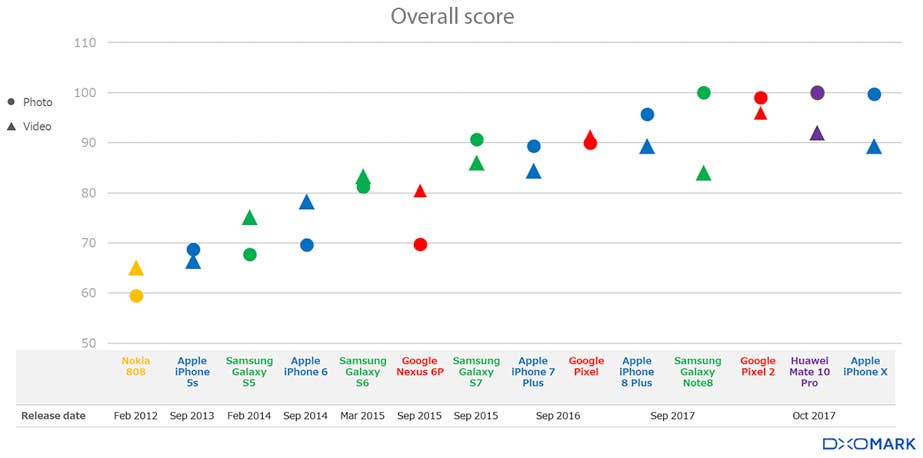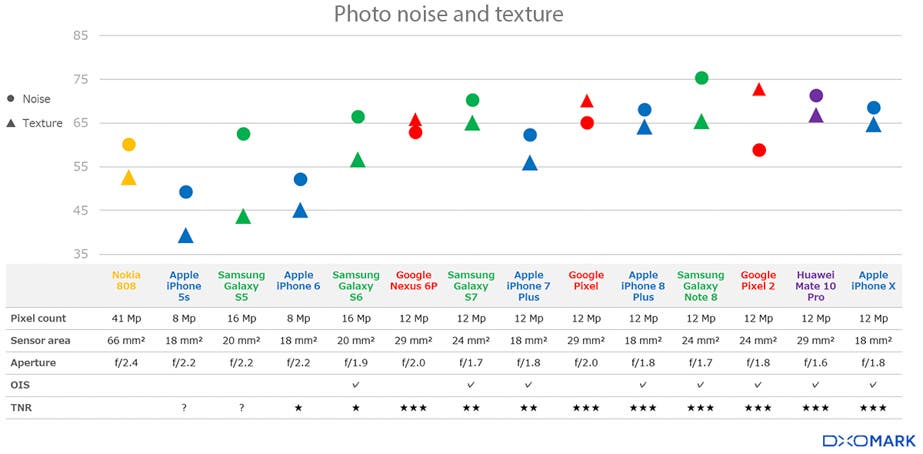DxOMark has made a name for itself by testing digital cameras and lenses for many years now, and since 2012 they’ve been testing smartphone cameras. Now the independent test lab has just published a major study that shows in both visual and graphic form exactly how much Smartphones have improved in capturing both still images and video. The bottom line? They’ve improved a lot.
“The smartphone has become the go-to imaging device for billions of hobby and occasional photographers around the globe,” DxO notes, “and thanks to drastically improved image quality and performance, it has left conventional standalone digital cameras far behind in terms of both sales and popularity.”

Despite design limits that prevent smartphone makers from using larger sensors to provide better image quality (as many stand-alone camera companies have done), Apple, Samsung, and Google—as well as newcomer Huawei—have managed to nearly double overall image quality scores over the initial models tested in 2012, according to DxOMark’s test results.
DxOMark scores smartphone camera test results based on several criteria, including signal-to-noise ratio (noise and texture), noise reduction, image and video stabilization, image processing capabilities, dynamic range, exposure, autofocus, skin tones, bokeh, and zoom.
Right now, there’s a virtual three-way tie between the Samsung Galaxy Note 8, Huawei Mate 10 Pro, and Apple iPhone X for still image quality, while the Google Pixel 2 wins for overall video quality and is oh-so-barely in second place on still image quality. All four cameras are hovering in the 100 overall score neighborhood. Contrast that with the first smart camera DxOMark tested, the Nokia 808, which scored just below 60 for still images and around 65 for video.

The report dives deep into the technology. It even talks about how different kinds of sensor architecture affects image quality. For example, it notes that the Huawei Mate 10 Pro combines a Bayer sensor with a black-and-white sensor to quadruple (theoretically) the light capture for better low-light performance. One of the interesting graphs provided by DxOMark compares photo noise and texture in different phones; the results are more widely distributed than the overall score.


The report also shows how advances in image processing are making a difference in image quality; this is especially noticeable in low light. A dramatic change is charted in comparison pictures of the Apple iPhone 5s, 6, 7 Plus and X. Likewise, the report shows smartphones are “getting smarter” when it comes to properly exposed images and improvements in dynamic range:

The report touches on the effectiveness of dual lenses, improvements in Bokeh, and focus depth. Finally, the report talks about how the 2015 switch from contrast-based autofocus to phase detection has helped improve focus responsiveness, and that this has especially been helpful for video capture.

What’s next for smartphone cameras? DxOMark predicts more 3D-sensing components that will lead to improved computational bokeh effects, portrait capture, and facial lighting, as well as more smartphones mixing Bayer and black and white sensors.




